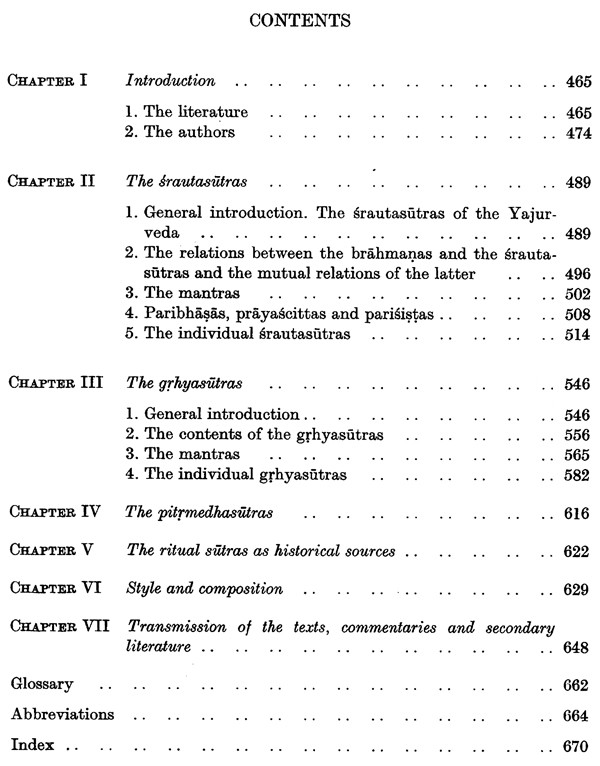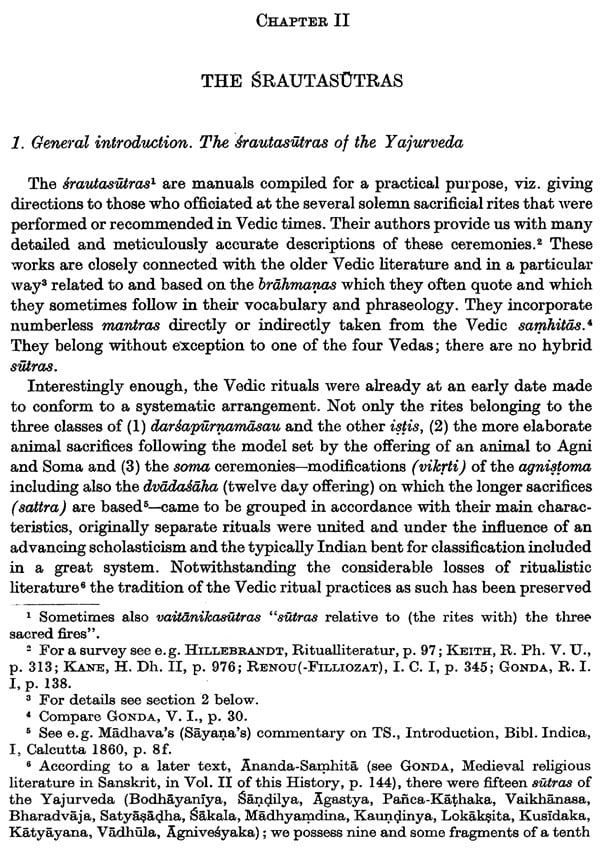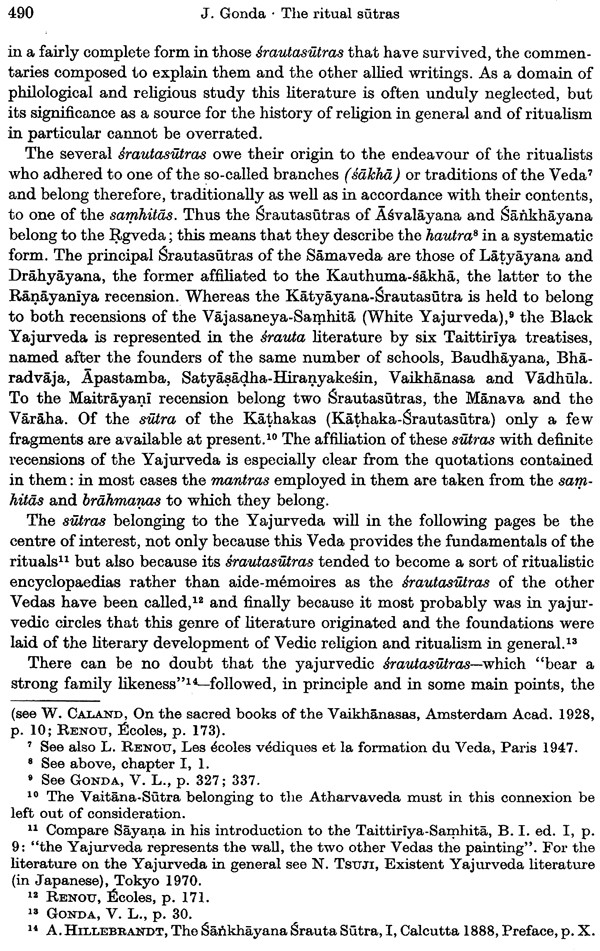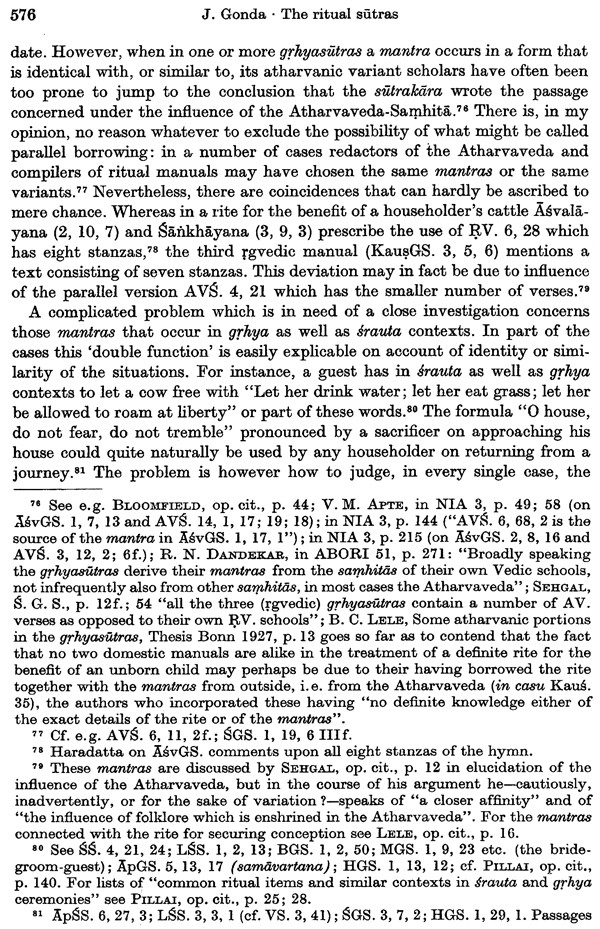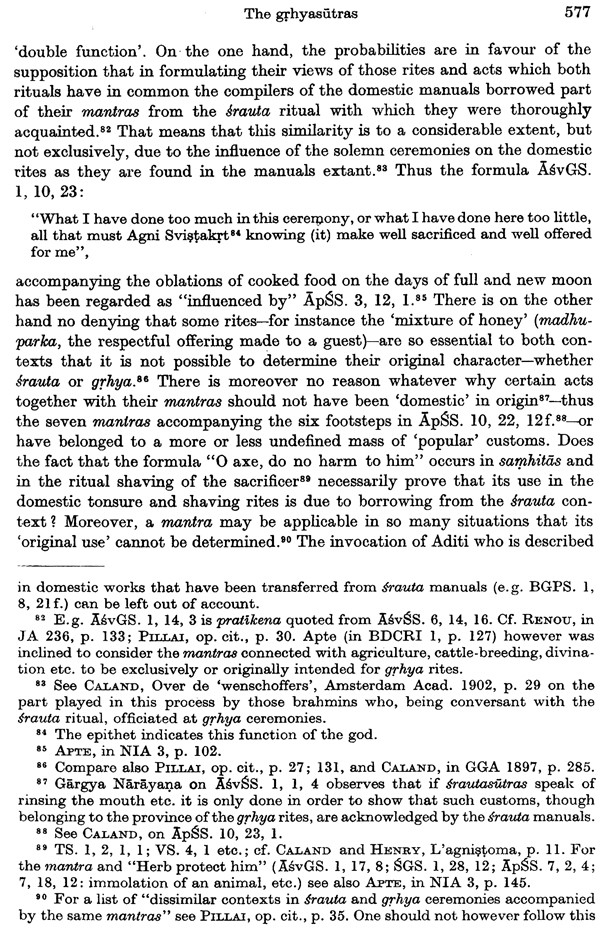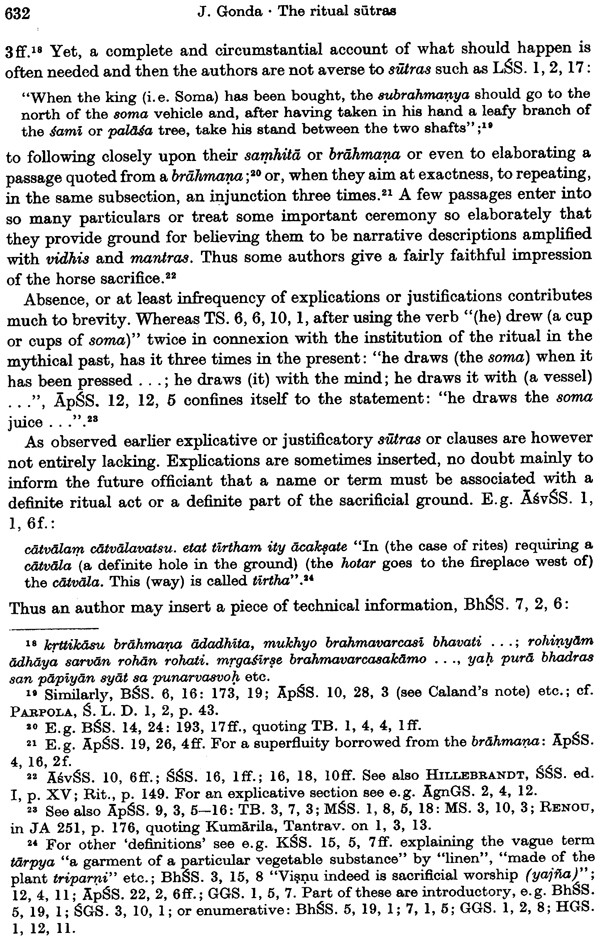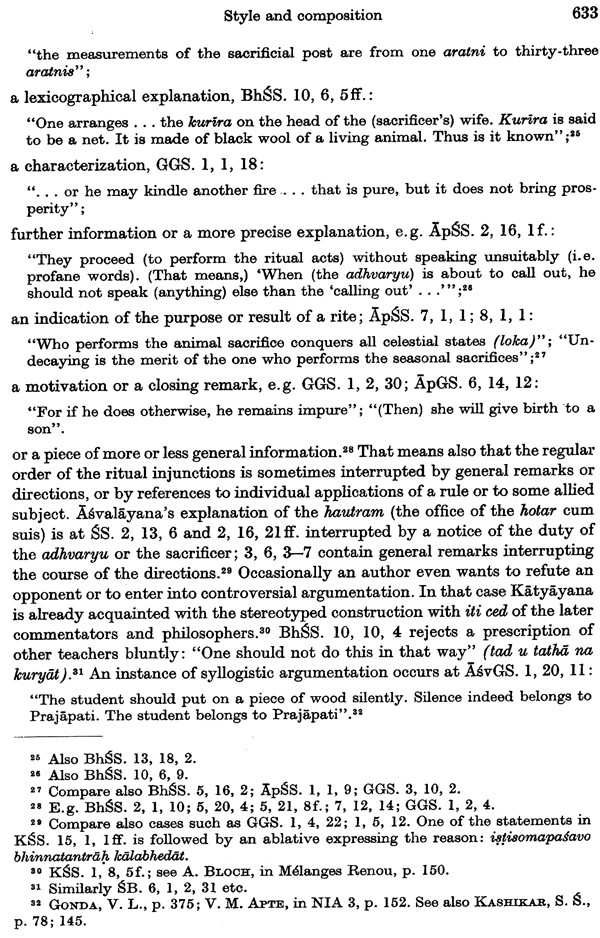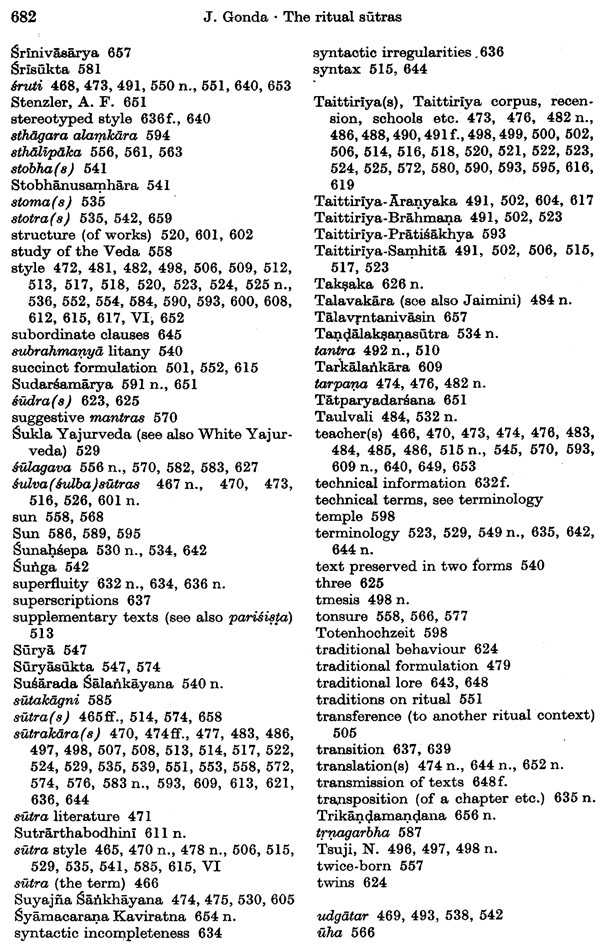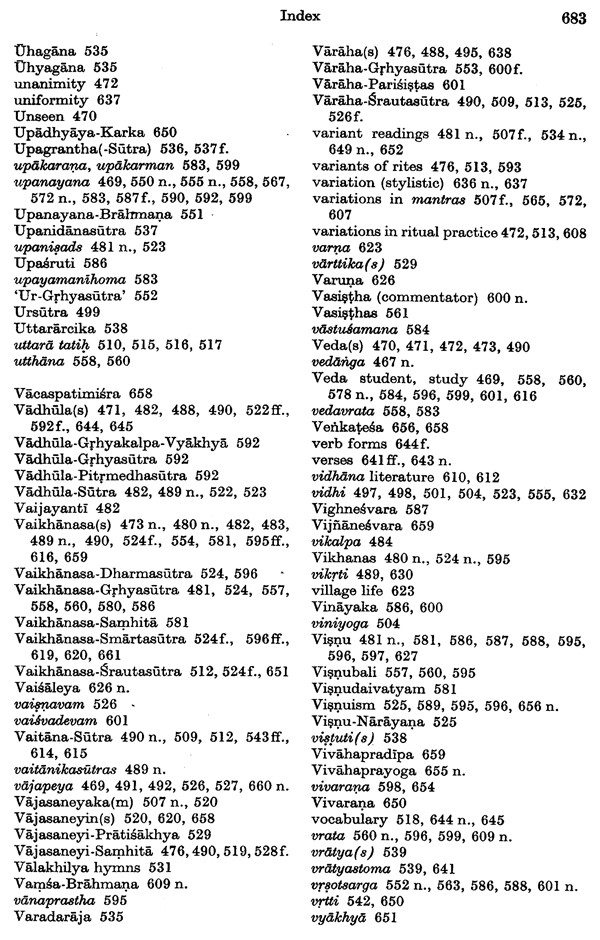
The Ritual Sutras (A History Of Indian Literature, Volume -1, Fasc-2)
Book Specification
| Item Code: | NBZ817 |
| Author: | Jan Gonda |
| Publisher: | Manohar Publishers and Distributors |
| Language: | English |
| Edition: | 2020 |
| ISBN: | 9789388540353 |
| Pages: | 226 |
| Cover: | HARDCOVER |
| Other Details | 9.50 X 6.50 inches |
| Weight | 430 gm |
Book Description
In the later Vedic period the scholarly literature developed a new prose style, generally known as sautra style. The term sutra, for want of something better often translated by "aphorism", denotes, generally speaking, a large and varied number of "manuals of instruction"! and "systematic surveys or resume"." Although part of the ancient Indian branches of learning has not preserved sutra works marking the beginning of their literature" the hypo- thesis is legitimate that in the period mentioned and the succeeding centuries at least the most important disciplines came to fix their rules or tenets in the form of succinct resumes or manuals. The rise of this class of literature was largely caused by the need of reducing the growing mass of details preserved in circles of specialists in some branch of traditional knowledge. It cannot be disconnected from a method of teaching designed to enable the student to memorize vast and varied masses of facts, rules and other relevant information.
Codifying and systematizing the various branches of knowledge it satisfied the needs of a system of oral instruction in which each stage in the exposition of a subject was to be learnt progressively and the whole of it, conveniently analyzed, was to be committed to memory.
Butra works, constituting a genre that is peculiar to India, are intended to present the essence of some doctrine systematically in a compact form. Generally speaking, they aim at precision and, especially, at brevity.' In order to achieve the utmost succinctness, repetitions and any other superfluities are avoided, references to the subjects or objects of sentences limited, finite verb forms eliminated The contents are compressed within a compass that does not exact too much from the student's memory. And in fact, this genre of literature, evolving for the facilitation of oral transmission and memorizing of knowledge, developed interesting devices for affecting this purpose, for instance careful arrangements of the subject-matter and a skilful composition of chapters and sections. The result generally consisted of long successions of short phrases which in many cases impress a modern reader as a sort of classified index of the subjects dealt with rather than a manual. Although a good many of them are grammatically complete and logically impeccable individual smarms can hardly be disconnected from their context because they correlate to the sutras which precede Bind follow them and are normally determined by the system of which they form part. This fundamental, though variable, conciseness of their style-which in the post-Vedic period tended to become more pronounced-as well as their thematic and conceptual interdependence presupposed, not only, on the part of the student, a sufficiency of general in- formation on the subjects dealt with 6 but also the accompaniment of a teacher whose interpretation and comments had to make the brief notes comprehensible and to fill in all details needed for a complete understanding. In this respect we are at a disadvantage because we generally lack such authentic interpretations.
The name smarm (literally "thread"), which is applicable to' both the whole work and its individual sentences or paragraphs, has been variously explained, but there can be no doubt that it is taken from the image of weaving and of woven material made out of threads. A thread stretched out lengthwise as a warp to be crossed by the woof may continue-then sutra becomes a name for the whole work-or it may be cut on both sides of the frame-then smarm denotes the single paragraphs."
Book's Contents and Sample Pages
